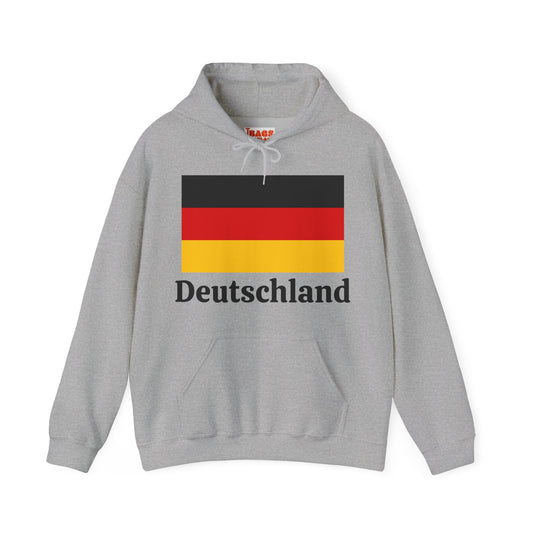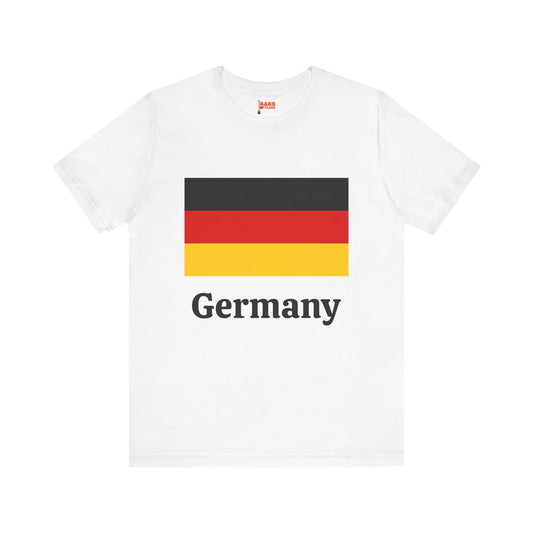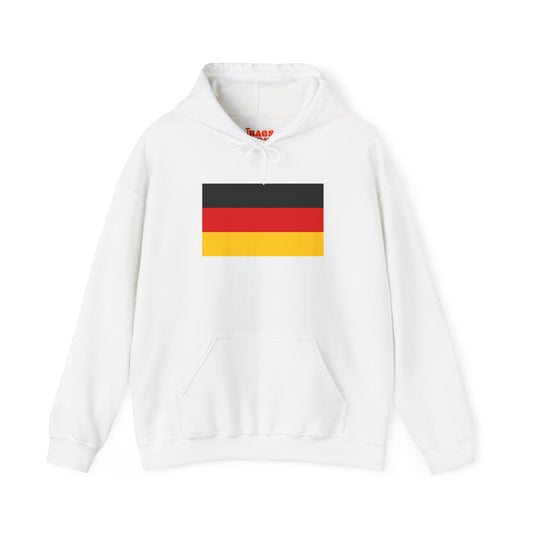-
Germany Pillow
Regular price $22.65 USDRegular priceUnit price / per -
Germany Backpack
Regular price $59.79 USDRegular priceUnit price / per -
Germany Leather Patch Hat
Regular price $18.85 USDRegular priceUnit price / per -
Deutschland Sweatshirt
Regular price $34.15 USDRegular priceUnit price / per -
Germany Flag Sweatshirt
Regular price $34.15 USDRegular priceUnit price / per -
Germany Sweatshirt
Regular price $34.15 USDRegular priceUnit price / per -
Germany Mug
Regular price $11.65 USDRegular priceUnit price / per -
Germany Trucker Cap
Regular price $14.90 USDRegular priceUnit price / per -
Deutschland Hoodies
Regular price $34.40 USDRegular priceUnit price / per -
Deutschland T-shirts
Regular price $22.79 USDRegular priceUnit price / per -
Germany Hoodies
Regular price $34.40 USDRegular priceUnit price / per -
Germany T-shirts
Regular price $22.79 USDRegular priceUnit price / per -
Germany Flag Hoodies
Regular price $34.40 USDRegular priceUnit price / per -
Germany Flag on T-shirt
Regular price $22.79 USDRegular priceUnit price / per
Collection: Germany
The German flag, also known as the flag of Germany, is a significant symbol representing the country's history, culture, and values. This iconic flag features three horizontal stripes of black, red, and gold, which hold deep historical and symbolic meanings. Let's delve into the untold history and meaning behind the German flag.
Overview of the German Flag Design and Colors

The flag of Germany features a striking and straightforward design characterized by three equally sized horizontal stripes. At the top is a band of black, followed by a vibrant red in the middle, and completing the design at the bottom is a gold (often perceived as yellow) stripe. This tri-color scheme is visually appealing and rich in historical significance, with each hue conveying a specific aspect of the nation's heritage and values.
The flag's colors are deliberately chosen to represent ideals central to the German identity, with the stark contrast between the bands making the flag easily recognizable and deeply symbolic. The simplicity of the design ensures that the flag is identifiable under various circumstances, whether flying high on a flagpole or adorning the jerseys of national sports teams. This clear and concise representation allows the flag to serve as a powerful emblem of unity and national pride for Germany.
Historical Context: The Flag's Journey Through Time

The origins of the black, red, and gold tricolor of the German flag trace back to the early 19th century, specifically to the volunteers of the Lützow Free Corps during the Wars of Liberation against Napoleon. These colors were first adopted in 1848 by the Frankfurt Parliament, representing the first attempt at a unified German state. This initial adoption, however, was short-lived due to the failure of the 1848 revolutions.
With the establishment of the German Empire in 1871, the flag's colors were replaced by a black-white-red scheme, reflecting the colors of Prussia and the Hanseatic League, which played significant roles in the empire's formation. It wasn't until after World War I and the fall of the German Empire in 1919 that the Weimar Republic reinstated the black, red, and gold flag as the national colors, symbolizing a return to democratic values.
The flag faced another period of abandonment during the Nazi regime from 1933 to 1945 when the swastika flag was enforced as the national symbol. After the defeat of Nazi Germany in World War II, the black, red, and gold were re-established in 1949 with the founding of the Federal Republic of Germany (West Germany), symbolizing a recommitment to the democratic ideals that the colors originally stood for. East Germany also adopted a variation of this flag in 1959, which included the state emblem. However, with the reunification of Germany in 1990, the symbol was removed, and the plain tricolor once again stood for the whole of Germany, marking the culmination of its journey through the nation’s tumultuous history.
Symbolism: The Deep Meanings Behind the Flag
The colors of the German flag are not only striking but imbued with profound symbolic meanings, each reflecting core values and the spirit of the nation:
- Black: Symbolizes the strength and determination of the German people. It represents the dark periods of history that Germany has endured and overcome.
- Red: Stands for bravery and the courage of the nation. Echoes the bloodshed in the pursuit of freedom and unity.
- Gold (Yellow): Signifies generosity, a hallmark of the country's spirit. Embodies the hope and optimism for a prosperous future.
These colors collectively narrate Germany's resilience, courage, and solidarity, serving as a constant reminder of the nation's journey and the ideals it strives to uphold. They encapsulate the essence of German identity, weaving together past struggles with future aspirations.
Current Relevance: The German Flag in Today's World
Today, the German flag is ubiquitous at a wide array of events, serving as a beacon of national identity and collective memory. It flies high during significant national celebrations, such as German Unity Day. It is a staple at international sports competitions, where it rallies support for German athletes and symbolizes national pride. The flag also plays a critical role in military ceremonies and state functions, underscoring the occasion's gravity and honoring the country's heritage.
Despite its revered status, the flag occasionally becomes a focal point in national identity and historical remembrance debates. These discussions often reflect Germans' complex relationship with their past, highlighting a collective effort to reconcile historical pride with the responsibility of remembrance. In these contexts, the flag transcends its role as a mere national symbol; it becomes a canvas upon which the broader narratives of German history, culture, and values are projected, engaging citizens in ongoing dialogue about what it means to be German in the modern world.
Additional Facts: Protocols and Anecdotes
The German flag, steeped in history and symbolism, is subject to specific protocols that govern its display and handling, underscoring the respect and dignity it commands. The flag must be positioned prominently and treated with the utmost respect when displayed. This includes ensuring it is never allowed to drag on the ground or be used in a manner that could be seen as disrespectful. Raising and lowering the flag is done with a sense of ceremony, often accompanied by national anthems or solemn salutes, particularly during state functions or military ceremonies.
One fascinating anecdote that highlights the flag's deep-rooted significance involves its re-adoption post-World War II. In a powerful gesture of rebirth and unity, the black, red, and gold tricolor was reinstated, symbolizing not only a rejection of the recent past under the Nazi regime but also a recommitment to the democratic values the flag initially represented. This decision marked a poignant moment in German history, as the flag again symbolized hope, unity, and a brighter future for all Germans.
Moreover, the flag is not merely a state symbol; it carries personal meaning for many citizens as a reminder of the country's journey through times of turmoil and triumph. Its presence at international sports events, proudly displayed by athletes and fans alike, showcases its role in fostering a sense of national pride and collective identity that transcends political and historical complexities.




























